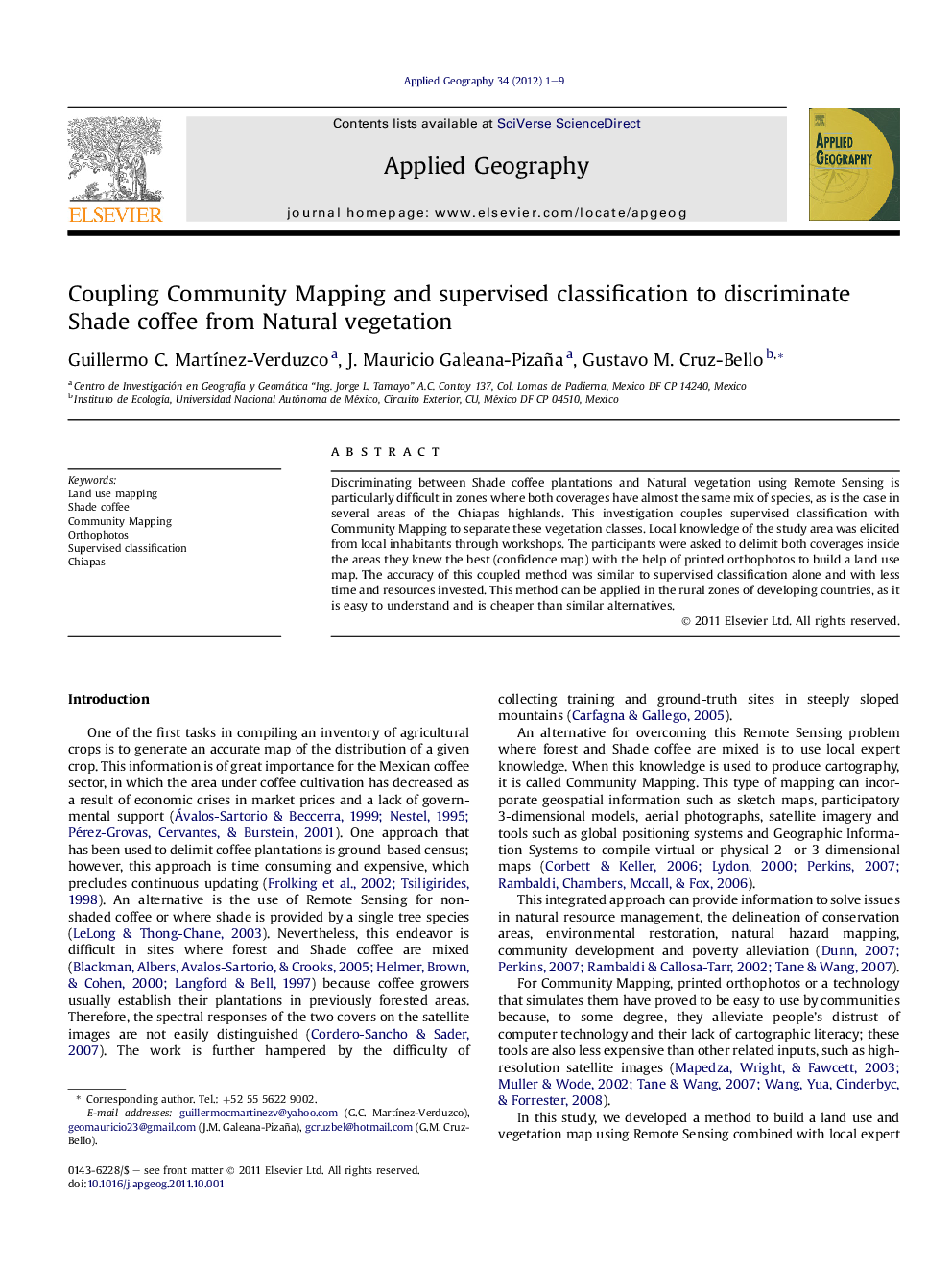| Article ID | Journal | Published Year | Pages | File Type |
|---|---|---|---|---|
| 83405 | Applied Geography | 2012 | 9 Pages |
Discriminating between Shade coffee plantations and Natural vegetation using Remote Sensing is particularly difficult in zones where both coverages have almost the same mix of species, as is the case in several areas of the Chiapas highlands. This investigation couples supervised classification with Community Mapping to separate these vegetation classes. Local knowledge of the study area was elicited from local inhabitants through workshops. The participants were asked to delimit both coverages inside the areas they knew the best (confidence map) with the help of printed orthophotos to build a land use map. The accuracy of this coupled method was similar to supervised classification alone and with less time and resources invested. This method can be applied in the rural zones of developing countries, as it is easy to understand and is cheaper than similar alternatives.
► We coupled supervised classification with Community Mapping to separate Shade coffee and forest. ► We elicited local knowledge from study area inhabitants through participatory workshops. ► This coupled method produced similar accuracy levels to supervised classification. ► This combined method demonstrated being less time and resources consuming.
